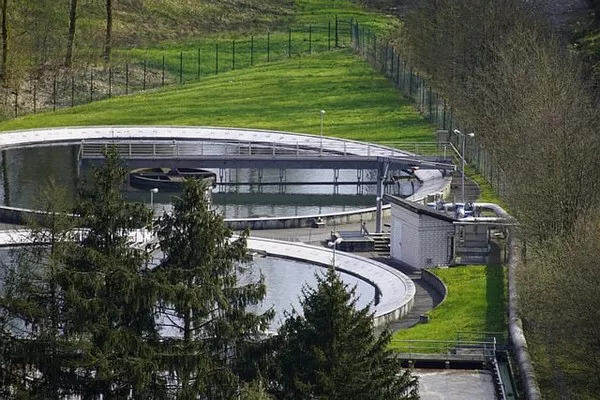Wastewater treatment plays a critical role in preserving our environment and ensuring public health. Among the various methods of wastewater treatment, anaerobic wastewater treatment has gained attention for its efficiency, cost-effectiveness, and environmental benefits. In this article, we will explore what anaerobic wastewater treatment is, its principles, advantages, and applications, highlighting its importance in the realm of sustainable wastewater management.
What is Anaerobic Wastewater Treatment?
Anaerobic wastewater treatment is a biological process that occurs in the absence of oxygen. Unlike aerobic treatment processes, which rely on oxygen to break down organic matter, anaerobic treatment harnesses the power of anaerobic microorganisms to degrade organic pollutants. Anaerobic digestion, a subset of anaerobic wastewater treatment, primarily focuses on the conversion of organic matter into biogas (methane and carbon dioxide) while stabilizing the waste. This method is widely used in various industrial, agricultural, and municipal applications.
Principles of Anaerobic Wastewater Treatment
Anaerobic wastewater treatment relies on a series of complex biological and chemical reactions that take place in the absence of oxygen. The key principles include:
Hydrolysis: Anaerobic digestion begins with hydrolysis, where complex organic compounds in wastewater are broken down into simpler soluble substances. This initial step is essential as it makes the organic matter more accessible for further microbial decomposition.
Acidogenesis: In this phase, the hydrolyzed products are converted into volatile fatty acids (VFAs) and other intermediary compounds. Acidogenic bacteria play a crucial role in this step, producing acetate, propionate, and butyrate as metabolic byproducts.
Acetogenesis: Acetogenic bacteria further convert VFAs into acetate and hydrogen gas. This step is vital in producing the substrates needed for the final step of anaerobic digestion, methanogenesis.
Methanogenesis: Methanogenic archaea, the key microorganisms in this phase, convert acetate, hydrogen, and carbon dioxide into methane gas (CH4) and carbon dioxide (CO2). This biogas is a valuable end-product with various potential uses, including energy production.
Advantages of Anaerobic Wastewater Treatment
Energy Generation: One of the most significant advantages of anaerobic wastewater treatment is the production of biogas. Methane, the primary component of biogas, can be harnessed as a renewable energy source for heating, electricity generation, or transportation fuel, reducing the overall carbon footprint of wastewater treatment facilities.
Reduced Sludge Production: Anaerobic treatment typically results in lower sludge generation compared to aerobic treatment methods. This not only decreases disposal costs but also minimizes the environmental impact associated with sludge management.
Low Operational Costs: Anaerobic systems generally require less energy for aeration and mixing, making them more cost-effective to operate than their aerobic counterparts. Moreover, the production of biogas can offset operational expenses.
Lower Carbon Emissions: The conversion of organic matter into methane helps reduce greenhouse gas emissions. By capturing and utilizing methane, anaerobic wastewater treatment contributes to climate change mitigation.
Versatile Applications: Anaerobic treatment is suitable for a wide range of wastewater types, including industrial, municipal, and agricultural effluents. Its adaptability makes it an attractive option for various settings.
Enhanced Nutrient Removal: Anaerobic wastewater treatment can also remove nutrients such as nitrogen and phosphorus, further improving the water quality and reducing the risk of eutrophication in receiving bodies of water.
Applications of Anaerobic Wastewater Treatment
Municipal Wastewater Treatment: Anaerobic digestion is commonly used in municipal wastewater treatment plants to treat sewage and sludge. The biogas produced can be used to generate electricity or heat, making the process more sustainable and cost-effective.
Industrial Wastewater Treatment: Anaerobic treatment is widely employed in various industrial sectors, including food and beverage, pulp and paper, and chemical manufacturing. It effectively treats high-strength organic wastewaters and can help industries meet stringent environmental regulations.
Agricultural Wastewater Treatment: Anaerobic lagoons and digesters are used in the agricultural sector to manage animal waste, including manure from livestock. This not only reduces odors and pathogens but also generates biogas that can be used on the farm.
Landfill Leachate Treatment: Anaerobic treatment is used to treat leachate from landfills, preventing the release of harmful pollutants into the environment and reducing the environmental impact of waste disposal.
Challenges and Considerations
While anaerobic wastewater treatment offers numerous advantages, it is not without its challenges. Some key considerations include:
Long Retention Times: Anaerobic treatment typically requires longer retention times than aerobic processes. This can be a limitation in facilities with space constraints or where rapid treatment is necessary.
Sensitivity to Temperature: The efficiency of anaerobic digestion is highly temperature-dependent. Lower temperatures can slow down the treatment process, necessitating heating systems in colder climates.
pH Control: Maintaining the appropriate pH level is crucial for anaerobic treatment to prevent the inhibition of methanogenic microorganisms. This requires careful monitoring and adjustment.
Variable Influent Quality: Anaerobic systems can be sensitive to fluctuations in influent quality, which may affect the overall performance of the treatment process. Adequate pretreatment may be required to stabilize the influent.
Sulphide and Corrosion: The presence of sulphides in wastewater can lead to the production of hydrogen sulphide gas, which is corrosive. This requires special considerations for equipment and materials to prevent damage.
Conclusion
Anaerobic wastewater treatment has emerged as a sustainable and efficient solution for the treatment of organic wastewater, offering significant advantages in terms of energy generation, reduced sludge production, and lower operational costs. Its versatility and adaptability make it suitable for a wide range of applications, from municipal sewage treatment to industrial and agricultural wastewater management. However, it is essential to address the challenges associated with anaerobic treatment, such as temperature sensitivity and pH control, to optimize its performance.
As the world faces growing concerns over water scarcity and environmental sustainability, anaerobic wastewater treatment represents a promising pathway to cleaner, more efficient, and more cost-effective wastewater management. With ongoing research and technological advancements, it is likely that anaerobic treatment methods will continue to play a pivotal role in addressing the pressing challenges of water pollution and resource recovery in the 21st century.

